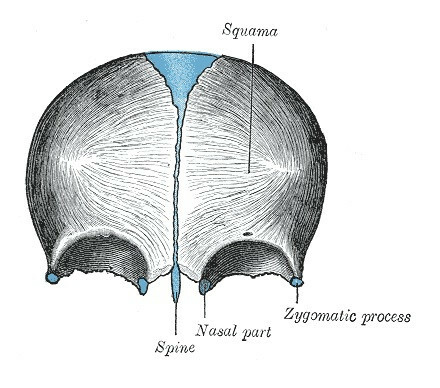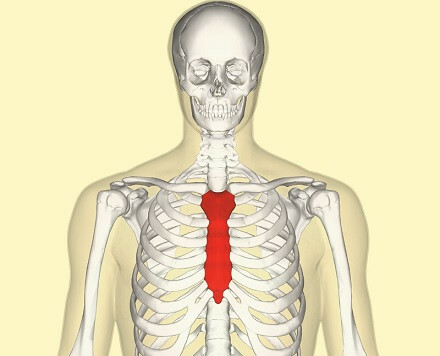Flat bones: what are they, types and functions
The human skeleton is the set of bones that give the body its structure. It is composed of a total of 206 bone pieces and occupies 15% of the total mass of an adult individual. In other words, a person weighing 75 kilograms will have approximately 9 kilograms of bone stored in his bone structure.
The skeleton has various functions: it acts as a mechanical support and allows postural maintenance in a three-dimensional space, it enables (together with muscles and tendons) the movement, protects our organs against mechanical forces, is a metabolic store of minerals (such as calcium and phosphate) and allows the formation of cells blood. Inside some bones is the bone marrow, a tissue that contains pluripotent hematopoietic stem cells. From here all the formed elements of the blood arise, from red blood cells to lymphocytes.
Bones are essential to understanding vertebrate life. Beyond its structural function, all blood cells and many minerals are stored and synthesized here. Here we tell you all about flat bones, not without first reviewing the general bone physiology of the human being.
- Related article: "The 4 most important diseases of the skeletal system"
What are bones?
According to the Oxford Languages dictionary, a bone can be defined as a hard and resistant piece of the skeleton of vertebrate animals, yellowish-white in color. The bone is made up of organic substance and mineral salts, and surrounded by a fibrous membrane.
Quickly stated, bone structures are composed of a collagen protein framework (30%), along with a mineral known as calcium phosphate (hydroxyapatite, 70% of the matrix), which gives it hardness and resistance to said frame. Bone tissue is very atypical, since 98% of it corresponds to extracellular matrix substances and only 2% is represented by cells (osteocytes, osteoblasts and osteoclasts).
We can categorize bones according to multiple parameters, but the simplest organization is based on their dimensions. Attending to them, we find the different types of bone tissue:
- Long bones: height (length) predominates over width and thickness. The typical long bone is the femur.
- Short bones: where the 3 dimensions (length x height x width) are practically the same. Carpus and tarsus are examples of short bones.
- Sesamoid bones: short bone found in relation to a tendon. The kneecap is a clear example.
- Flat bones: the ones that interest us here. We describe its peculiarities in the following lines.
- Irregular bones: all those bones that cannot be included in the categories previously described.
What are flat bones?
As indicated by the United States National Library of Medicine, flat bones are those that are composed of a layer of cancellous bone between two thin layers of compact bone. They are flat and not rounded in shape, hence their name, and have marrow, but do not have a bone marrow cavity per se. In them, length and width dominate over thickness.
Thus, we can imagine flat bones as a "sandwich" of different tissues. Cancellous bone tissue is made up of a mesh-like framework made up of small pieces of bone, called bone trabeculae. On the other hand, compact bone is the hardest and most external part of the bone, the whitish and resistant one that is already part of the collective imagination. It looks like ivory and is extremely resistant.
The places where most flat bones are located are the skull, pelvis, and thorax. Here are some examples within this category. Do not miss them.
1. Scapula
The scapula or shoulder blade is the flat bone par excellence, as every human being knows it and is easily identifiable by touch above the skin. It is a very flat, triangular bone with a costal or anterior face and a dorsal or posterior face..
It is located in the back of the thorax, at the level of the first 7 ribs, and helps to connect the humerus with the clavicle, giving shape to the structure known as the shoulder girdle. The scapula has a total of 18 muscles that originate or insert into itThus, it is a highly mobile structure subject to various dysfunctionalities due to mechanical stress.

2. Frontal bone
A bone of the skull, which in humans is odd, central (on the forehead), symmetrical and flat. It has an endocranial and an exocranial face, but the important thing about it is to know that it is one of the central elements of the human face, since it is also widely related to other bone structures, such as the sphenoid, the ethmoid, part of the upper jaw, the zygomatic, the parietal and the bones found internally in the nose.
This bone has enormous physiological importance, because in addition to acting as a mechanical protection for the brain, serves as an insertion point for the occipitofrontal muscle, essential for gesture language and body communication in the human being.

- You may be interested in: "Bones of the head (skull): how many are there and what are they called?"
3. Breastbone
A flat, central, elongated bone with a pointed end. It is located in the front part of the thorax, where the upper ribs and clavicles meet.. In humans, this vitally important bone is made up of 3 different parts: the handle or manubrium, the body and the xiphoid process or process.
Sometimes the sternum is synonymous with the chest bone, due to its place and its physiological importance. Its main function is to protect the heart and lungs from possible mechanical damage., since thanks to him the rib cage exists. Clavicle injuries, hernias, fractures, gastric reflux, muscle strains, and many other events can cause sternal and substernal pain.

4. Ribs
We cannot leave our ribs in the inkwell, the flat bones that give our trunk its appearance and allow the formation of the rib cage, along with the sternum and other associated structures. The ribs are flat and curved bones of different sizes, which surround the chest of vertebrates, allowing the lungs to expand during the respiratory process.
Humans generally have about 12 pairs of ribs. 7 of them are true or sternal, 3 are false or asternal, and 2 are considered floating. Each of them has 2 faces, 2 edges and 2 ends. They serve as protection for the internal organs of the thorax, although in other species they provide support and protection to practically the entire body segment.
Functions of flat bones
As you may have seen at this point, the typical functionality of flat bones is protection, beyond the production of movement. They keep soft structures, such as the brain (cranial bones), heart, aorta, and the lungs (bones of the rib cage) and even the reproductive organs, both male and female.
Flat bones are not specifically vulnerable, but due to their damage-absorbing function, they can be the first to be affected during severe blows or trauma. Flat bone fractures can pay dearly in the long run, as the underlying structures they protect are extremely fragile and their damage is sometimes irreparable. Therefore, in the event of any trauma, no matter how small, it is always advisable to go to a medical specialist.
Resume
Usually, when we think of a bone, the femur, tibia or fibula come to mind. This is normal, since these bone structures are the longest and most striking in the body, at least from an anatomical point of view. In any case, as you may have seen, there are many other types of bones: from those that accompany tendons to flat bones, each and every one of our bone structures fulfill an essential function and irreplaceable.
Flat bones contribute their grain of sand by forming a physical shell that protects the weakest organs of the body, such as the heart, lungs or brain. They ensure that a strong blow does not always end in disaster and, as a first barrier, they are prone to fractures and breaks during serious accidents.
Bibliographic references:
- Garcia, V. A., Egido, R. B., del Pino, J. M. B., Ruiz, A. B. C., Vidal, A. I. E., Aparicio, Á. F.,... & Domínguez-Rodrigo, M. (2006). Determination of fracture processes on fresh bones: a system for analyzing the angles of the fracturing planes as a discriminator of biotic agents. Prehistory Works, 63 (1), 37-45.
- Bones, Muscles and Joints, Kidshealth.org. Picked up on February 15 at https://kidshealth.org/AllChildrens/es/teens/bones-muscles-joints-esp.html#:~:text=Los%20huesos%20est%C3%A1n%20compuestos%20por, in% 20other% 20parts% 20of% 20body.
- Flat bones, physioonline.com. Picked up on February 15 at https://www.fisioterapia-online.com/glosario/huesos-planos
- Flat bones, Medlineplus.gov. Picked up on February 15 at https://medlineplus.gov/spanish/ency/article/002366.htm#:~:text=Los%20huesos%20planos%20est%C3%A1n%20compuestos, a% 20form% 20plana% 2C% 20no% 20rounded. & text =% 20bones% 20plana% 20have% 20m% C3% A9row, a% 20cavity% 20of% 20m% C3% A9row% 20% C3% B3sea.
- Le Vay, D. (2008). Human anatomy and physiology. Editorial Paidotribo.
